Cardiologist Q&A: Aortic Valve Stenosis Symptoms, Risks & Treatment
Written By: Allison DeMajistre, BSN, RN, CCRN
Medical Expert: Ashish Aneja, MD, Cardiologist and Aortic Valve Specialist at MetroHealth
Reviewed By: Adam Pick, Patient Advocate, Author & Website Founder
Published: June 10, 2024
Aortic valve stenosis is not only the most common cardiac valve disease worldwide, it is also the most deadly. 1,2
Unfortunately, the chance of developing aortic stenosis, which is a narrowing of the aortic valve which prevents blood flow through the heart and body, increases as people age. When symptoms like fatigue and shortness of breath develop, many people think it’s just “part of getting older.” Sadly, if symptoms aren’t addressed and the disease progresses to severe aortic stenosis, 50% of patients will die in just 24 months without treatment.3
For these reasons, we met with Dr. Ashish Aneja, a leading cardiologist and aortic valve specialist at MetroHealth in Cleveland, Ohio, to learn more about the risks, the symptoms and the treatments of aortic stenosis including minimally-invasive transcatheter aortic valve replacement (TAVR).
Key Learnings About Aortic Stenosis Symptoms, Risks, and Treatment
Here are key insights about aortic stenosis shared by Dr. Aneja:
- Aortic valve stenosis is a narrowing of the aortic valve that can negatively impact valve function. As Dr. Aneja stated, “Aortic stenosis is a narrowing of the aortic valve opening, most often because of calcium deposition at the leaflet level, which hinders the flow of blood from the ventricle out of the aorta and to the rest of the body. The body needs a certain amount of blood to perform its routine function, which is perfusion (blood flow) to the brain, kidneys, and all the other vital organs, including the heart itself.”
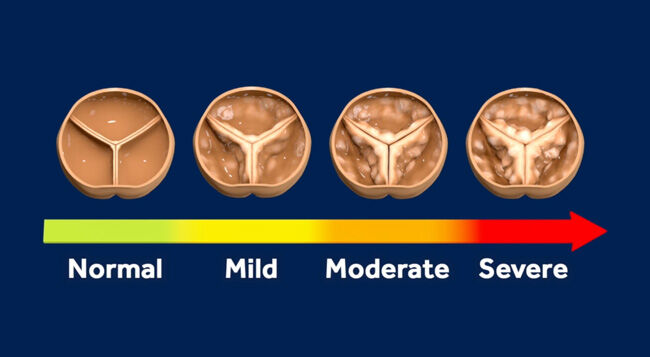
- Aortic stenosis is a progressive disease requiring close cardiologist monitoring. Dr. Aneja told us, “Aortic stenosis is a progressive disease, but it can take a very long amount of time to progress from mild to moderate to severe, depending upon an individual’s risk factors. It’s really important for patients to follow very closely with their cardiologist to ensure they get timely and regular clinical and echocardiography follow-ups.”
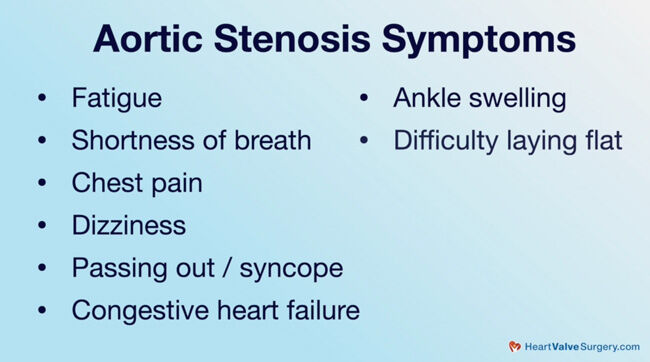
- It’s critical to be aware of symptoms because as they progress, patients have a high risk of dying. Dr. Aneja stated, “The symptoms of aortic stenosis are predominantly fatigue, shortness of breath, chest pain, dizziness, passing out or syncope, and congestive heart failure, which manifests with worsening shortness of breath, ankle swelling, and difficulty lying flat. Symptom awareness is critical because of the high risk of patients dying. About 50% of patients who have developed symptoms could die within the next two years.”3
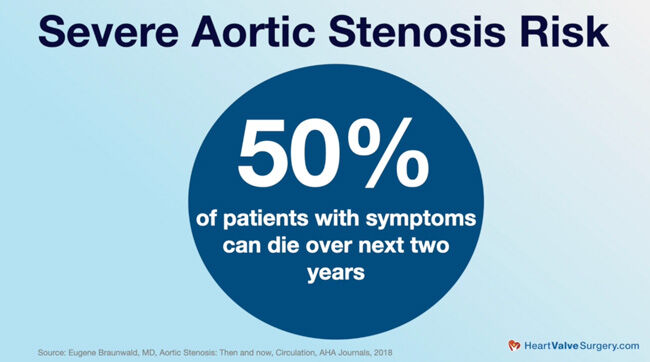
- Patients with aortic stenosis may not always have symptoms (asymptomatic). Dr. Aneja said, “Patients with aortic stenosis can indeed be asymptomatic. They can be truly asymptomatic. In other words, nothing has changed about the amount of exercise or activity they can perform over the last few years or months. Other patients may be “de-symptomatic,” meaning they reduce the amount of physical activity they have been performing.”
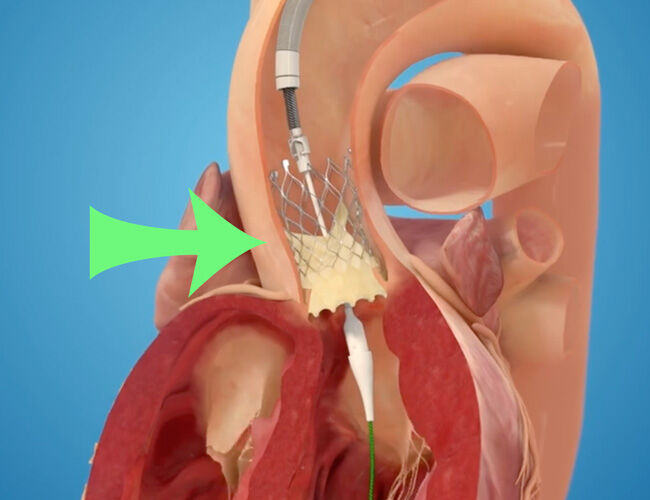
- Aortic stenosis can be treated surgically or with the less invasive transcatheter aortic valve replacement (TAVR) procedure. Dr. Aneja told us, “Aortic stenosis has traditionally been treated with a surgical approach. Patients would come to the hospital, stay for five days, and typically have their sternum (chest) cut and the valve replaced surgically with a new valve. For the most part, the valve used was metal, and then we started using valves made out of tissue taken from pigs and cows. More recently, over the last 10 or 15 years, we have seen the advent of TAVR, transcatheter aortic valve replacement, where a catheter is taken through the femoral artery (located in the groin) and advanced into the aortic valve position. It is “smushed” (placed) over the old valve, and it takes the position of the old valve.”
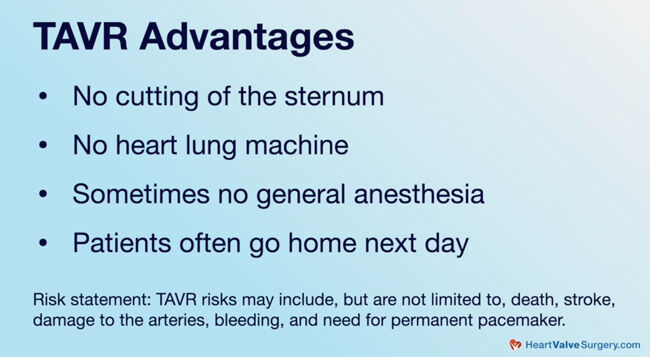
- TAVR has unique advantages compared to surgical approaches. Dr. Aneja said, “There are several advantages over the surgical approach. There’s no cutting of the sternum (chest), so patients don’t have to go through a heart-lung machine or bypass. Sometimes, they don’t even have to have general anesthesia, and it can be done with local anesthesia and modern sedation approaches. Patients often go home the next day.” Like most procedures, there are risks to TAVR which may include, but are not limited to, death, stroke, damage to the arteries, bleeding and need for permanent pacemaker.
- TAVR has transformed the treatment of aortic stenosis. Dr. Aneja stated, “TAVR has absolutely transformed the treatment of aortic stenosis. We have seen patients who were previously reluctant to have any kind of surgical approaches do wonderfully after TAVR. They get their quality of life back almost immediately. I know of many individuals who previously did not golf for up to ten years who have returned to the golf course and played 18 holes. It’s quite amazing. People who were reluctant to swim because they would get exhausted are now in the pool regularly. I know people who have traveled the world post-TAVR procedure and were reluctant to even travel out of state in their car.” Benefits may vary, for some patients, the Medtronic TAVR procedure risks may outweigh the benefits. Please talk to your doctor to decide whether this therapy is right for you.
- What is Dr. Aneja’s advice for aortic stenosis patients? “My advice to aortic stenosis patients is that you establish (connect) with a program that has an active TAVR heart team that takes care of these complicated individuals. Make sure to follow up with them regularly with echocardiograms and clinical visits, and when the time comes, be ready for this procedure,” he said.
- Talk to your doctor to see if TAVR is right for you and ask for a referral to a heart team. The statements and information presented herein may be the opinion of the individual physician featured and is not intended to constitute medical advice.
Thanks Dr. Aneja and MetroHealth!
On behalf of all the patients at HeartValveSurgery.com and all over the world, thank you, Dr. Aneja, for your insight, fantastic advice, and dedication to aortic stenosis treatment! We also want to thank your team at MetroHealth in Cleveland, Ohio, for taking care of heart valve patients!
Related Links:
- Medtronic TAVR Procedure: What Should Patients Know?
- TAVR Heart Team Finder
- Breaking News: Low-Risk TAVR Clinical Trial Results
Keep on tickin!
Adam
P.S. For the deaf and hard-of-hearing members of our patient community, I have provided a transcript of this interview with Dr. Aneja below.
References:
- Hélène Eltchaninoff, Clinton Lloyd, Bernard Prendergast. The past, present and future of aortic stenosis treatment, Br J Cardiol March 2023;30(suppl 1):S5–S11.
- About Valvular Heart Disease, U.S. Centers for Disease Control and Prevention, 2024.
- Ross J Jr, Braunwald E. Aortic stenosis. Circulation. July 1968;38(1 Suppl):61-67.
Video Transcript:
Adam Pick: Hi, everybody. It’s Adam with heartvalvesurgery.com. This is a special cardiologist question and answer session all about the symptoms, the risks, and the treatment options of aortic valve stenosis. I am thrilled to be joined by Dr. Ashish Aneja who is a leading cardiologist and aortic valve specialist at MetroHealth in Cleveland, Ohio. Dr. Aneja, it is great to see you and thanks so much for being with me today.
Dr. Aneja: It’s my pleasure.
Adam Pick: Yeah, to get started, can you help the patients understand what is aortic stenosis?
Dr. Aneja: Aortic stenosis is a narrowing of the aortic valve opening, most often because of calcium deposition at the valve leaflet level, which hinders the flow of blood from the ventricle out to the aorta and to the rest of the body. The body needs a certain amount of blood to perform its routine function which is profusion to the brain, to the kidneys, and all the other vital organs, including the heart itself.
Adam Pick: Dr. Aneja, is aortic stenosis a progressive disease? If so, how could that impact a patient’s treatment?
Dr. Aneja: Aortic stenosis is a progressive disease but it can take a very long amount of time to progress from mild to moderate to severe depending upon the individual’s risk factors. It is really important for them to follow very closely with their cardiologist to ensure that they get timely and regular follow-ups, both clinical and echocardiography.
Adam Pick: Dr. Aneja, what are the symptoms of aortic stenosis?
Dr. Aneja: The symptoms of aortic stenosis are predominantly fatigue, shortness of breath, chest pain, dizziness, passing out or syncope, and congestive heart failure, which manifests with worsening shortness of breath, ankle swelling, and difficulty lying flat.
Adam Pick: Dr. Aneja, those are a lot of serious symptoms. I’m curious to know for the patients. Why is it so important that they’re aware of these symptoms?
Dr. Aneja: Symptoms awareness in aortic stenosis is critical because patients are in high risk of dying. About 50% of patients who have developed symptoms could die within the next two years.
Adam Pick: Dr. Aneja, this is obviously a life-threatening disease that patients become aware of from their signs and symptoms, but can aortic stenosis also be asymptomatic?
Dr. Aneja: Patients with aortic stenosis can indeed be asymptomatic. They can be truly asymptomatic, in other words, nothing has changed about the amount of exercise or activity that they can perform over the last few years or months. Other patients may be de-symptomatic because they reduced the amount of physical activity that they’d been performing.
Adam Pick: Dr. Aneja, a big question now is how is aortic stenosis treated?
Dr. Aneja: Aortic stenosis has traditionally been treated with surgical approach. Patients would come to the hospital, stay in the hospital for five days, but typically, they would have their sternum cut and the valve replaced surgically with a new valve. The valve used to be, for the most part, a metal valve many, many years ago, and then we started putting in valves that were made out of tissue taken from pigs and cows. More recently, over the last 10 to 15 years, we have seen the advent of TAVR, transcatheter aortic valve replacement, where they are catheters taken through the femoral artery, which is in the groin, and advanced into the aortic valve position. It is smushed over the old valve and it takes the position of the old valve.
There are several advantages over the surgical approach. There’s no cutting of the sternum so patients don’t have to go through a heart lung machine or bypass. They sometimes these days don’t even have to go through anesthesia. It can be done with local anesthesia and modern sedation approaches. Patients often go home the next day and don’t need to be in the hospital. TAVR has absolutely transformed the treatment of aortic stenosis. We have seen patients that were previously reluctant to have any kind of surgical approaches. Patients do wonderfully after aortic stenosis treatment with TAVR. They really get their quality of life back almost immediately.
I know of many individuals who previously did not golf for up to ten years who have gone back to the golf course and have played 18 holes. It’s quite amazing. People that were reluctant to swim because they would get exhausted are in the pool regularly spending hours and hours and feel absolutely amazing. I know people that have traveled the world post TAVR procedure and who were reluctant to even travel out of state in their car.
Adam Pick: Dr. Aneja, it’s great to hear those patient stories of people getting back to active living. I’m curious to know. What is your advice for aortic stenosis patients?
Dr. Aneja: My advice to aortic stenosis patients is that you establish with a program that has an active heart team that takes care of these complicated individuals. You make sure that you follow up with them on a regular basis with echocardiograms, clinical visits, and when the time comes, be ready for this procedure.
Adam Pick: Dr. Aneja, that is fantastic advice. On behalf of all the patients at heartvalvesurgery.com, patients all over the world, thanks so much for your commitment and dedication to aortic stenosis treatment. Thanks for being with me today.
Dr. Aneja: It’s my pleasure. Thanks for having me. I really enjoyed the conversation.




